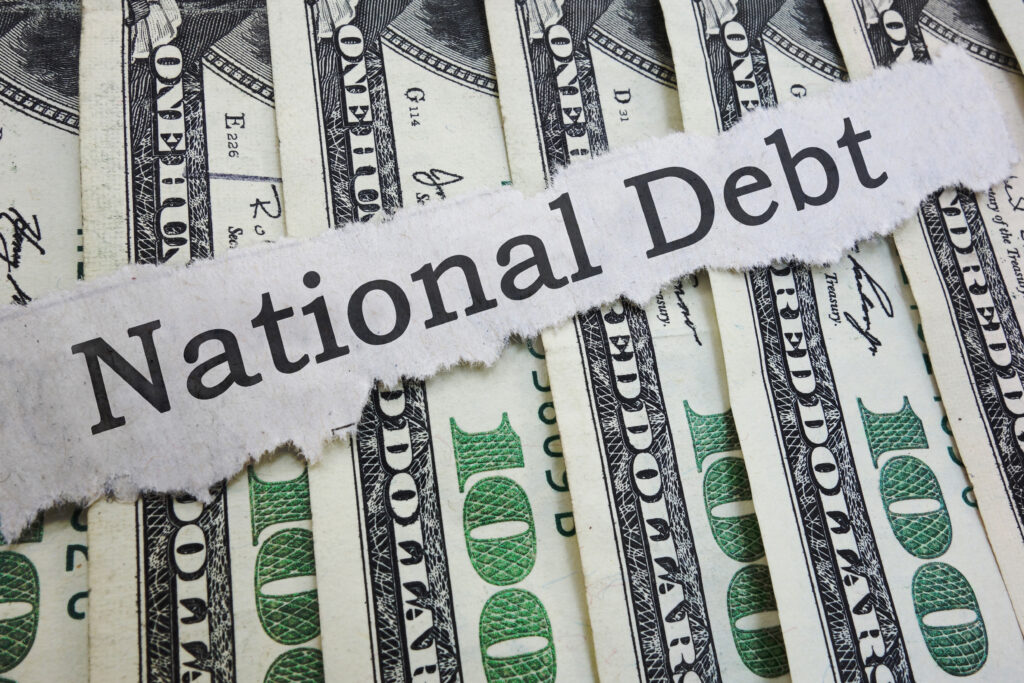
John Morton
So, what’s up with the debt ceiling? All this partisan politicking is dragging us down! Let’s highlight the 5 most important pieces you need to know and our advice on what to do with your portfolio.
#1
The US actually hit the debt ceiling in January! Since then, the US Treasury has used various cash and debt management techniques to continue paying obligations while staying under the debt limit.
- After lighter-than-expected tax receipts were accounted for, the latest projection by the US Treasury shows that resources to maintain all obligations could run out as early as June 1st.
- After that point, payments may be delayed or stopped for benefits to veterans, senior citizens (Social Security and Medicare), taxpayer refunds, etc. and it’s possible that debt can’t be repaid on time or in full (known as default).
#2
Without a resolution in advance, it’s highly likely that debtholders will be prioritized. Any available funds would first go towards repayment of maturing debt obligations for several reasons:
- There’s no political hierarchy involved with this choice by the Treasury. (For instance, choosing to issue payments for veterans’ benefits instead of Medicare obligations.)
- Everyone in government would be motivated to quickly resolve the problem because everyone has constituents that will be affected.
- Avoiding default is a top priority for maintaining financial stability.
#3
Default would have a lasting, negative impact on the economy.
- At a time when high inflation and interest rates are already dampening consumer and business sentiment, a default would further undermine confidence. Economic growth would take a hit.
- Within a matter of weeks after default (mid- or late-June), experts estimate that a tenth of economic activity would stop, 6 million jobs could be lost, and the stock market would fall by one-third.
- US debt would have a credit rating downgrade, which last occurred in 2011 with a corresponding debt ceiling crisis. There could be “a permanent increase in the cost of funding U.S. federal debt,” says David Kelly, chief global strategist at J.P. Morgan Asset Management.
- The global financial system depends on the stability of the dollar as the world’s dominant reserve and trade currency. Things would quickly become destabilized if confidence in the dollar drops. Over the last decade in particular, “de-dollarization” has been a common reprise. Despite this, global trade and currency reserves are still dominated by the US dollar. Up and coming alternatives, like the Chinese yuan, don’t have a deep and liquid market. Additionally, other countries often have just as many political issues and uncertainties as the US. A US default would still play into the de-dollarization theme: it would elevate concerns for the world’s reliance on the US dollar and jeopardize America’s place as a global leader.
#4
It’s almost certain that debtholders will still be paid on a delayed basis. In other words, it would be a default in terms of timing but not eventual repayment.
- In addition to full repayment, it’s very likely that there is additional compensation for debt that isn’t repaid on the maturity date.
- This already takes place when securities mature on, for example, the last of the month and it happens that the maturity date is a weekend day. The standing practice is to repay the debt on the nearest business day afterward with extra interest for the additional days held.
#5
The debt ceiling showdown has become a routine occurrence, so there is clearly a serious issue with our government’s spending and revenue mismatch that must be resolved. Annual deficits have persisted over the last two decades regardless of which party controls Congress or the presidency.
- Eventually, there could be changes to fix the underlying problem: higher taxes or spending cuts.
- With a divided government, those arduous changes are less likely than swiftly kicking the can down the road. Many predict that the debt ceiling will be suspended until the next fiscal year (starting Oct. 1) or next election year.
For investors, it is important to understand that stock and bond prices reflect the current probability of various scenarios heading into June 1st and, importantly, will continue to be volatile as new information is quickly factored into prices. Rather than attempting to time the market or predict an outcome, we advise staying invested in your carefully constructed, globally diversified investment portfolio that has been structured for your personal financial goals and risk tolerance.
We would be happy to offer more insights and analysis about the debt ceiling if you are interested in learning more. We’re also here to review your portfolio mix any time your personal circumstances may warrant a change.











